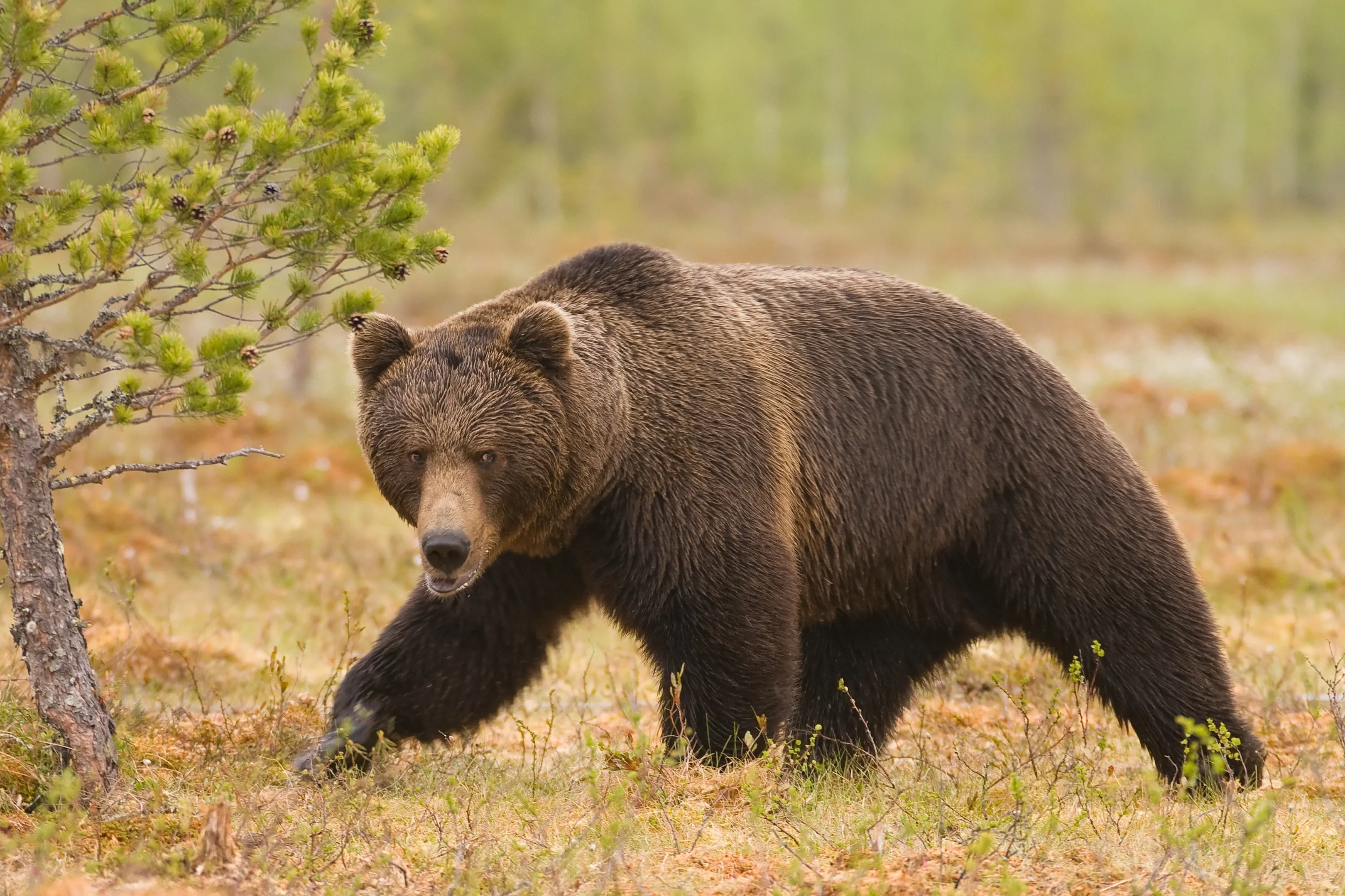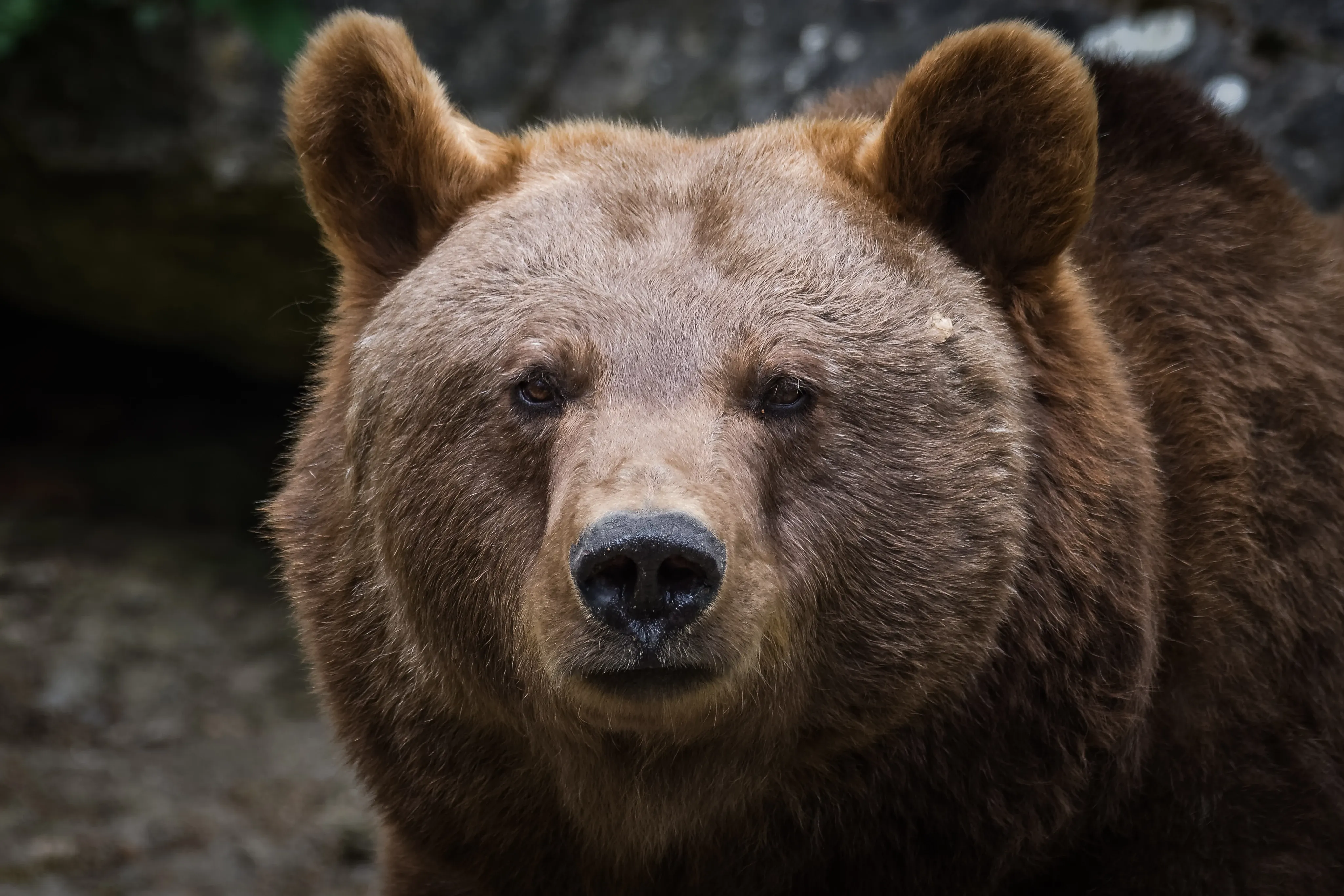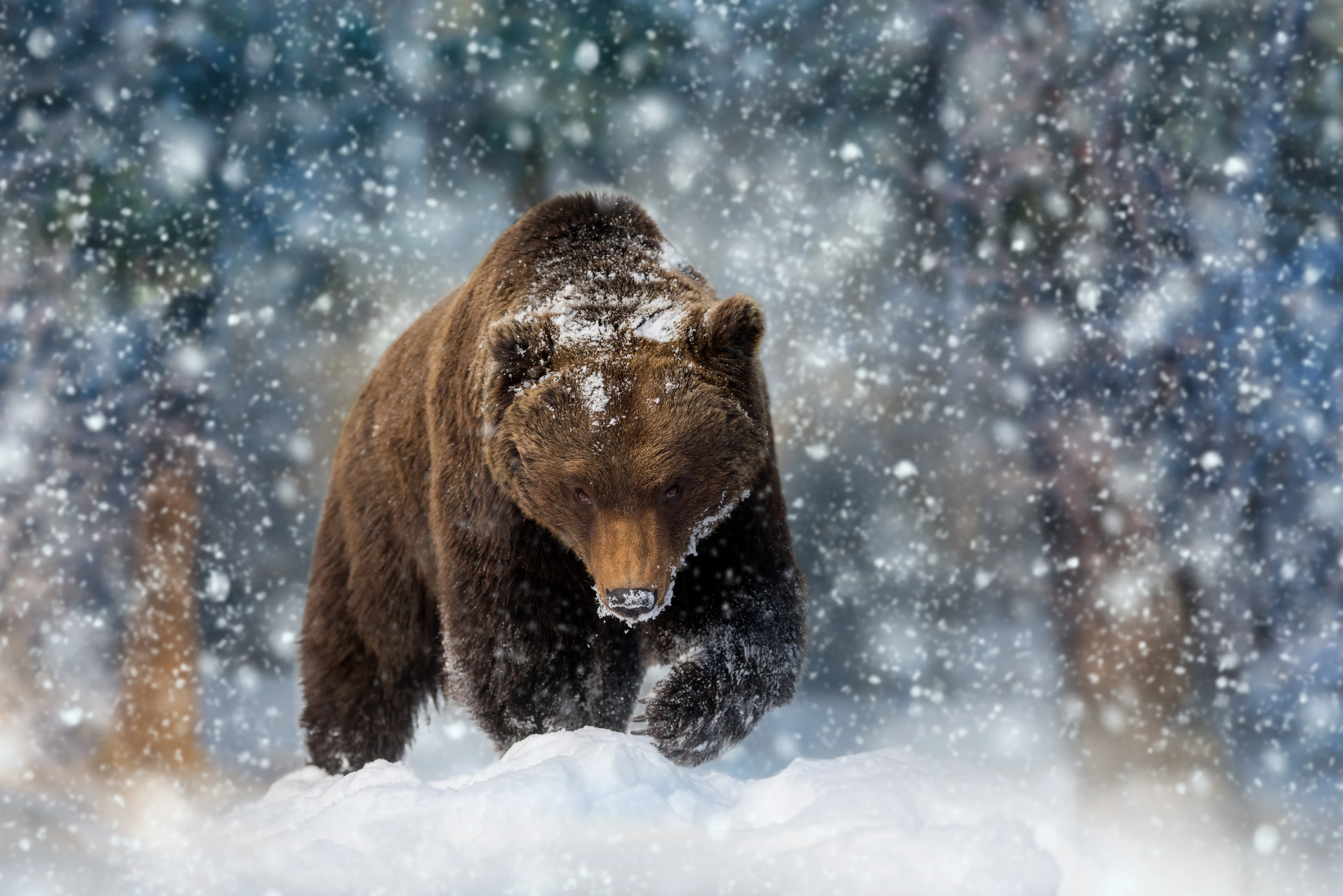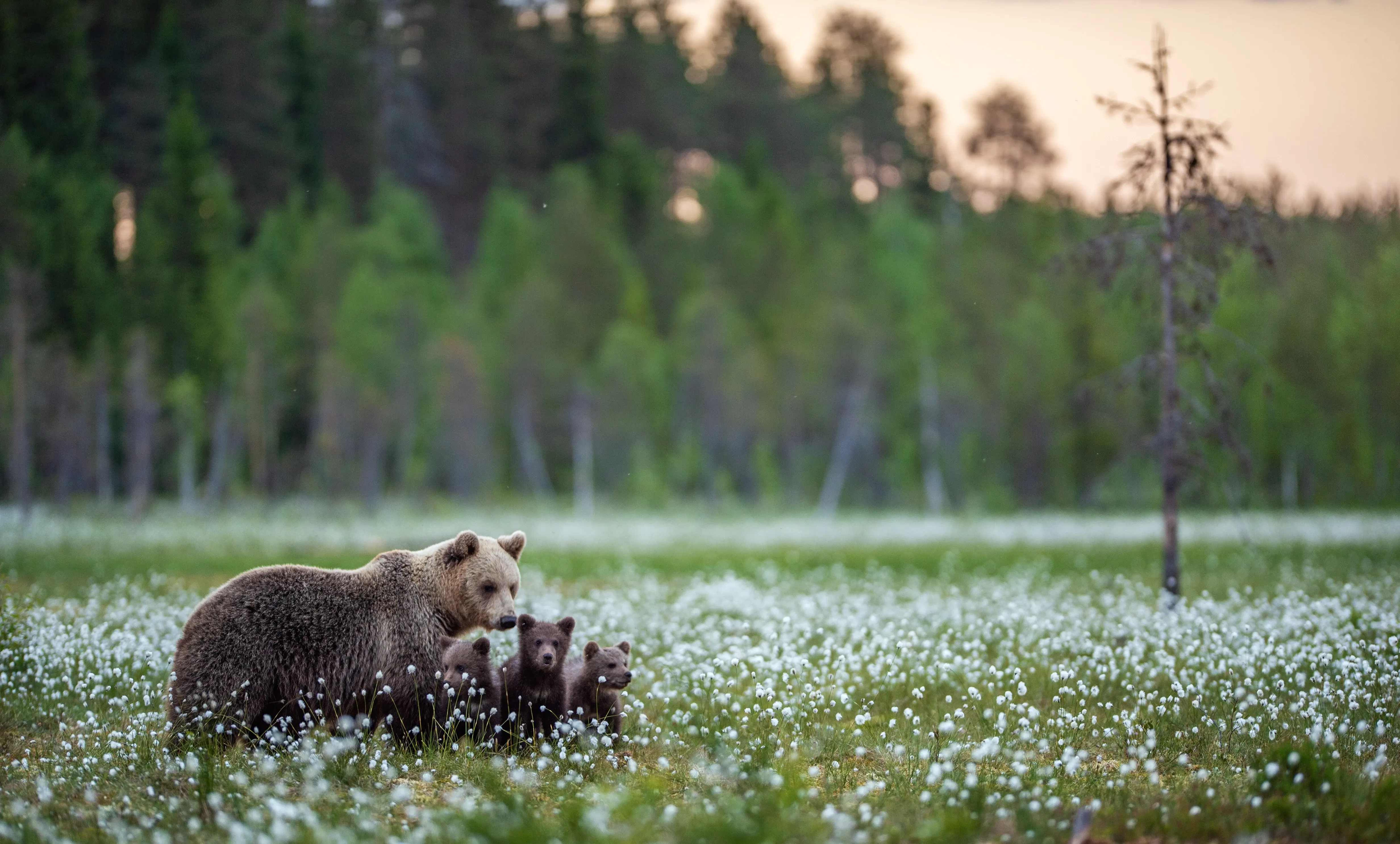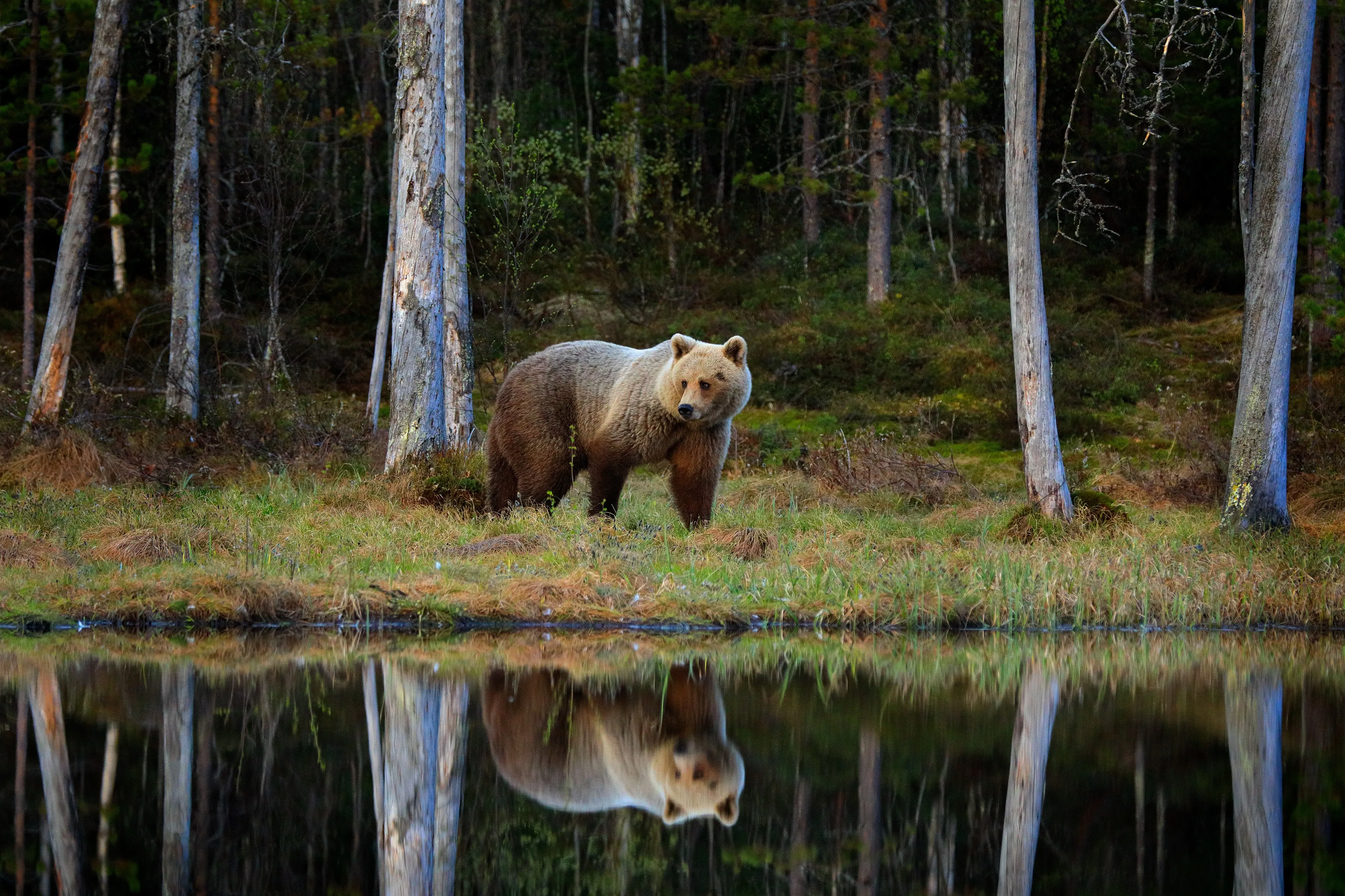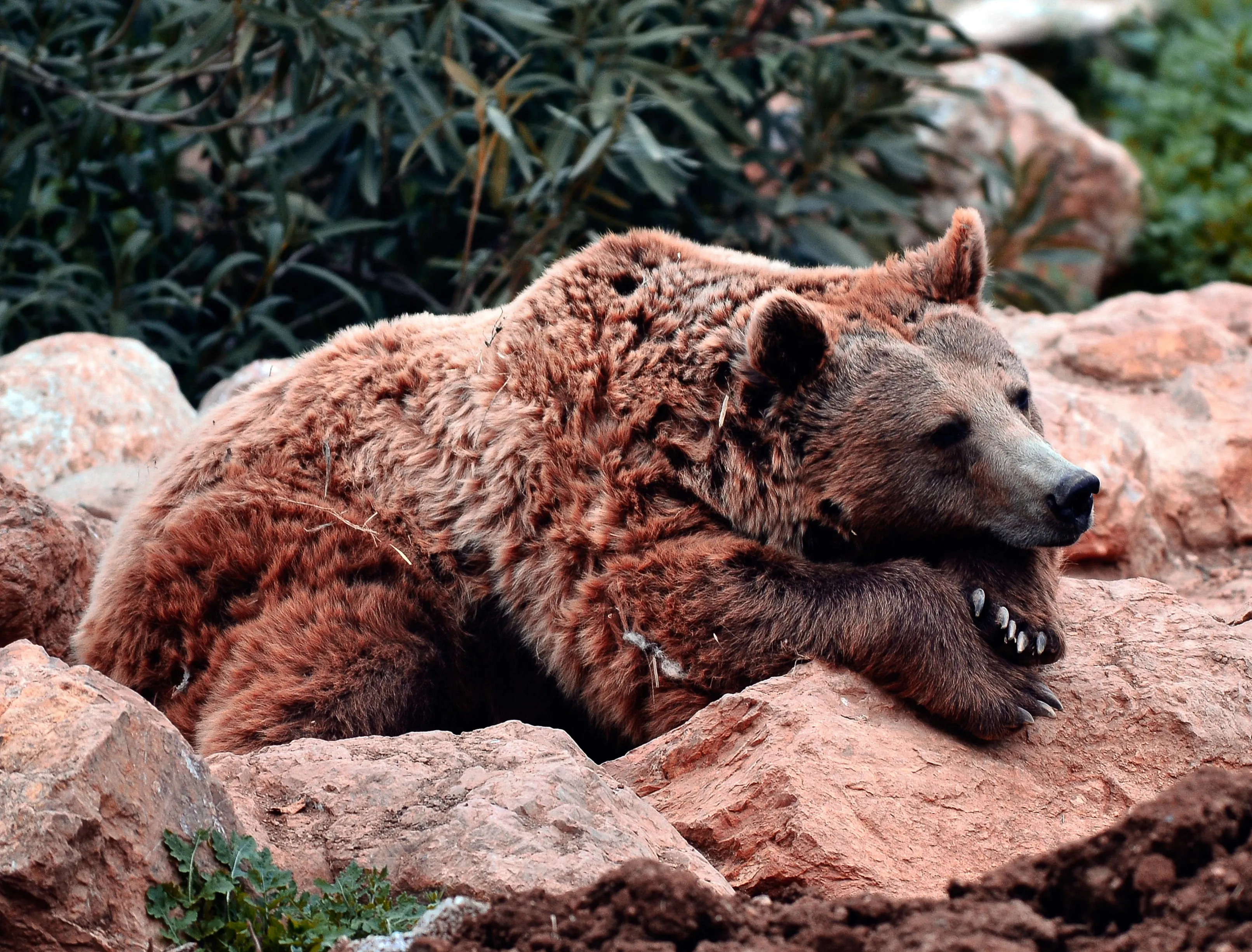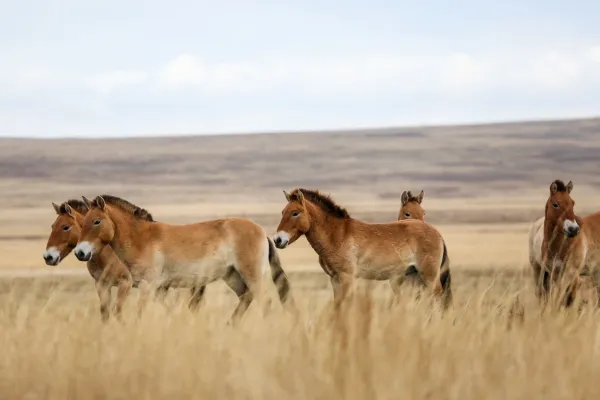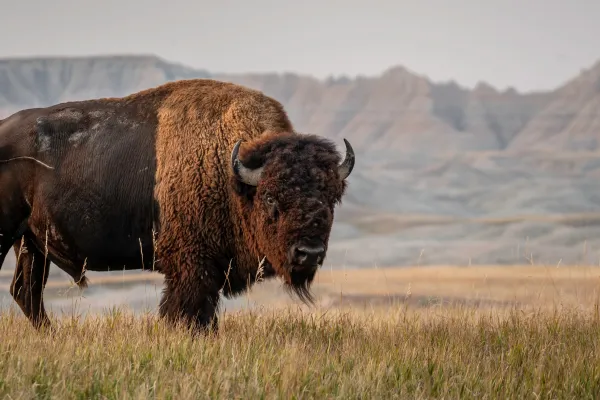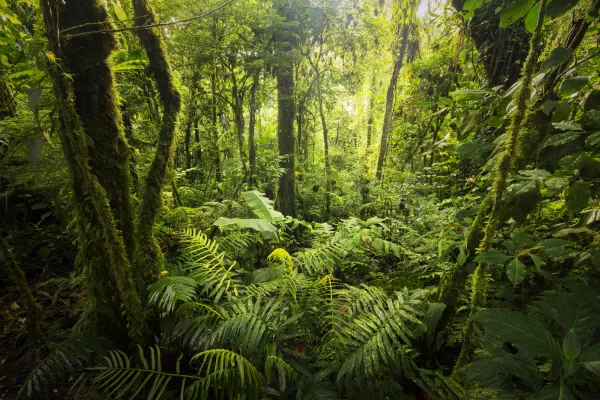Species introduction: European brown bear
The imposing brown bear, shy and powerful by nature, once roamed the vast forests of Europe, which once harbored it in abundance.
Its presence in these pristine landscapes embodied the wild splendor of nature and fascinated generations of people. But over time, its range has shrunk dramatically and today these majestic animals can only be found in a few select countries.
Germany, which was once inhabited by these impressive creatures, has already lost the brown bear from its forests for more than 150 years. This loss is not only a painful blow to the historical diversity of Europe's wildlife but also an urgent call to protect and restore the natural habitat for endangered species.
It is time to take action to allow the shy splendor and power of the brown bear to blossom again in our forests.
Fact sheet European brown bear
- Name: European brown bear
- Scientific name: Ursus arctos arctos
- Order: Predators (Carnivora)
- Superfamily: Dog-like animals (Canoidea)
- Family: Bears (Ursidae)
- Characteristics: Tight brown fur, round ears, long snout, humped neck, long claws
- Size: 170 - 250 cm long, 90- 110 cm shoulder height
- Weight: Up to 250 kilograms
- Life span: Up to 25 years
- Origin: The Carpathians, Balkan region, Alpine region, Slovenia, Italy, Spain, Scandinavia
- Habitat: Wooded mountain regions and extensive forest areas
- Territory size: About 100 km²
- Diet: Fruits, berries, buds, fish, carrion, roots and bird eggs
- Social behaviour: Solitary
- Endangerment status: Extinct in many countries (e.g. Germany)
Identification: Typical characteristics of the European brown bear
The body of the large mammal is covered with thick brown fur. Barely visible under this compact coat hides a small tail. Distant relatives of the bear species are dogs. The elongated snout and large nose are reminders of this relationship. In addition, the brown bear has rounded ears and small, closely spaced ears. Five long, strongly curved claws, that cannot be tucked in, equip each of the four paws.
Europe's largest land predator is small with regard to other brown bear species. European brown bears can reach weights of up to 250 kg. In comparison, Kodiak bears (Ursus arctos middendorffi) can weigh up to 700.
The sensory organs of the European brown bear
The shy predator has an outstanding sense of smell. They can also hear very well. These sensitive capabilities enable them to detect potential food over several kilometres.
In contrast, their vision is rather poor to average. It can be compared to that of humans.
You find more information at Bund Naturschutz e.V.
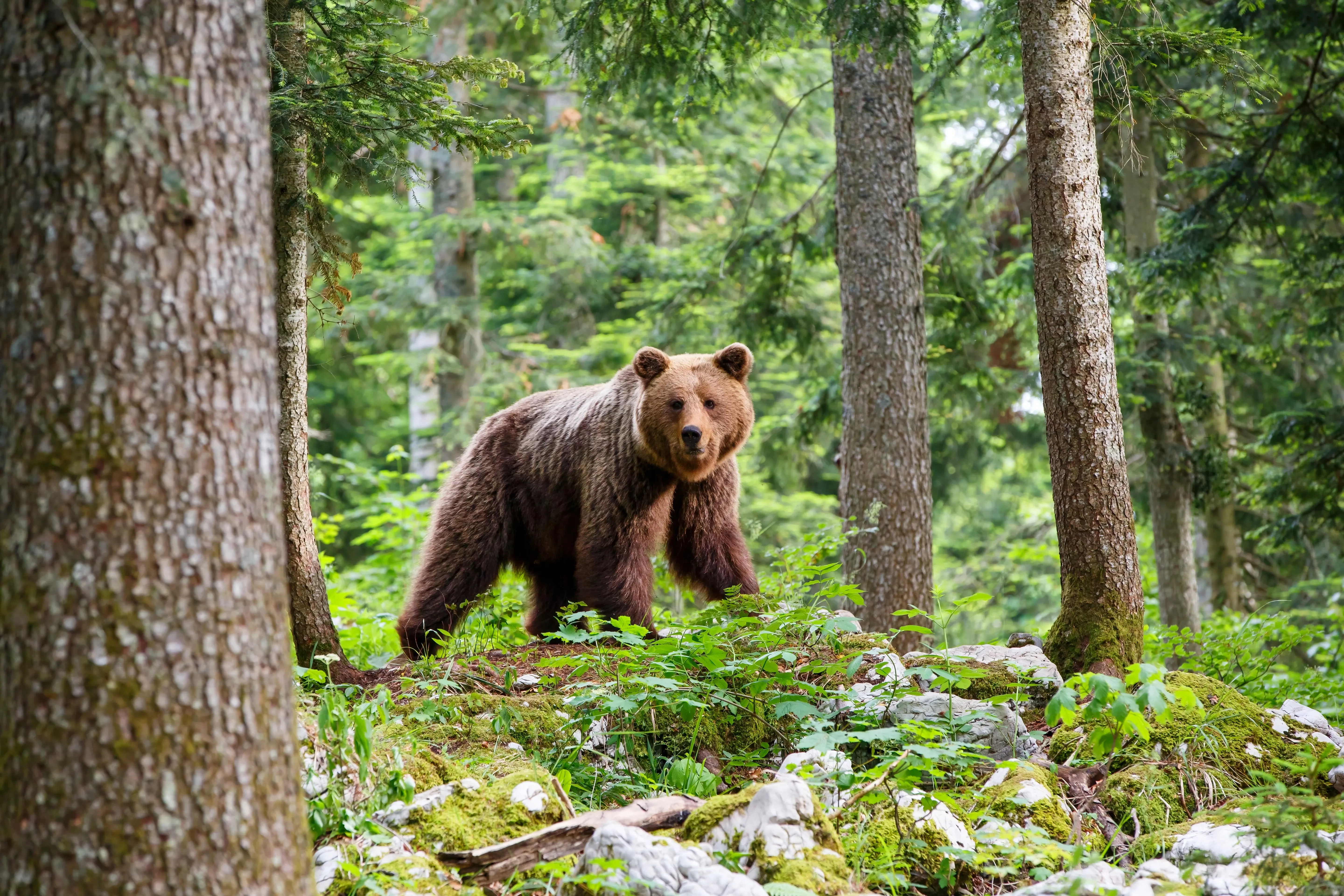
»A leaf fell in the forest. The deer heard it fall, the eagle saw it fall, the bear smelled it fall.«
Habitat: Occurrence of European brown bears
The European brown bear needs a lot of undisturbed forests. In Central Europe, the last bear territories are found in steep, often rocky, large-scale forests, where humans rarely get there. The size of the territory depends on the available resources, as well as, the age and sex of the bear. It varies from 100 square kilometers to 1,000 square kilometers in barren regions. In Europe, there are hardly any forests left that are this large. With the disappearance of these forests, bears have also become increasingly rare.
Are there brown bears in Germany?
No. However, whether brown bears will reintroduce themselves to Germany is not a question of habitat, but a question of acceptance. On flags, coats of arms and in fairy tales, bears are a welcome sight. In the wild, however, they are not so much.
Hunted, exterminated, returned and shot again
In 1835, Germany's last wild bear was shot. It was not until 171 years later that a bear found its way back to Germany. This bear, which set its paws on German soil in 2006, became tragically famous. Bruno, the "problem bear", killed cattle and therefore did not survive his time in Germany.
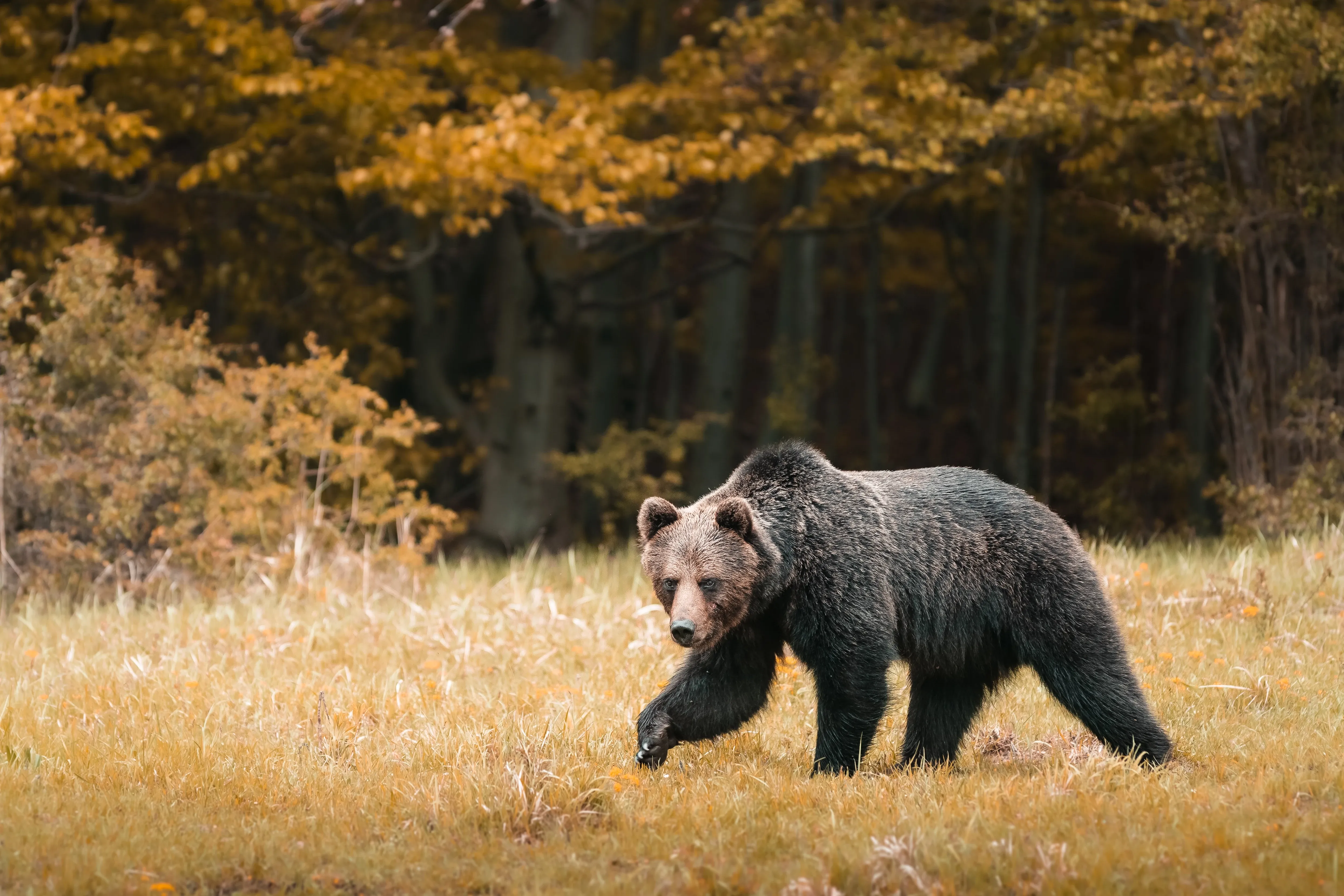
»If the brown bear comes back to Germany, it should be tolerated - just like the lynx or the wolf.«
Where in Europe do brown bears live?
In Europe, it is estimated that about 10,000 brown bears remain distributed in the Carpathians, Balkan region, Alpine region, Slovenia, Italy, Spain and Scandinavia.
Larger brown bear populations (>1000 individuals) live for example in Scandinavia. Small populations of only 50 - 60 animals can be found in the Italian Trentino.
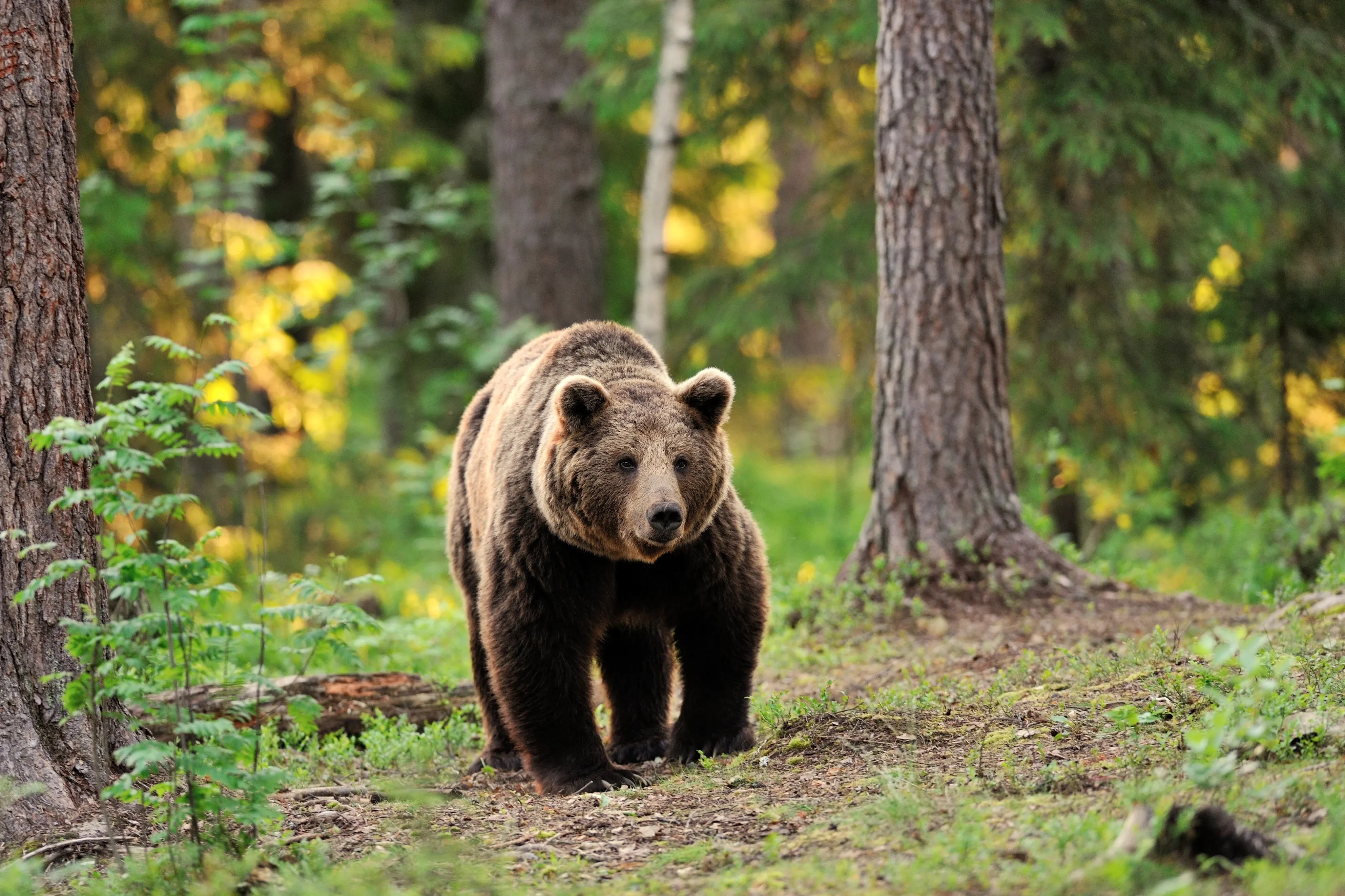
What do brown bears eat?
Brown bears are predators, but they do not feed mainly on meat. They are omnivorous and eat 75% plant-based food. Many fruits, berries, seeds, nuts, roots and grasses are on their menu. They can crush these vegetable delicacies with their cheek teeth. The bear excretes parts of the various seeds it eats and can positively change the forest ecosystem.
Insects, dead animals and hoofed animals are also part of their diet. Especially after the several months of winter rest, during which they lose 20-40 % of their body weight, the typical fangs of predators come into play. Plant food sources are still scarce, and "the bear's hunger" is great. During this time, the bear mainly preys on sick, old or young hoofed animals. In addition to deer, this can also include grazing animals such as sheep, goats or cattle. In coastal regions, they eat salmon.
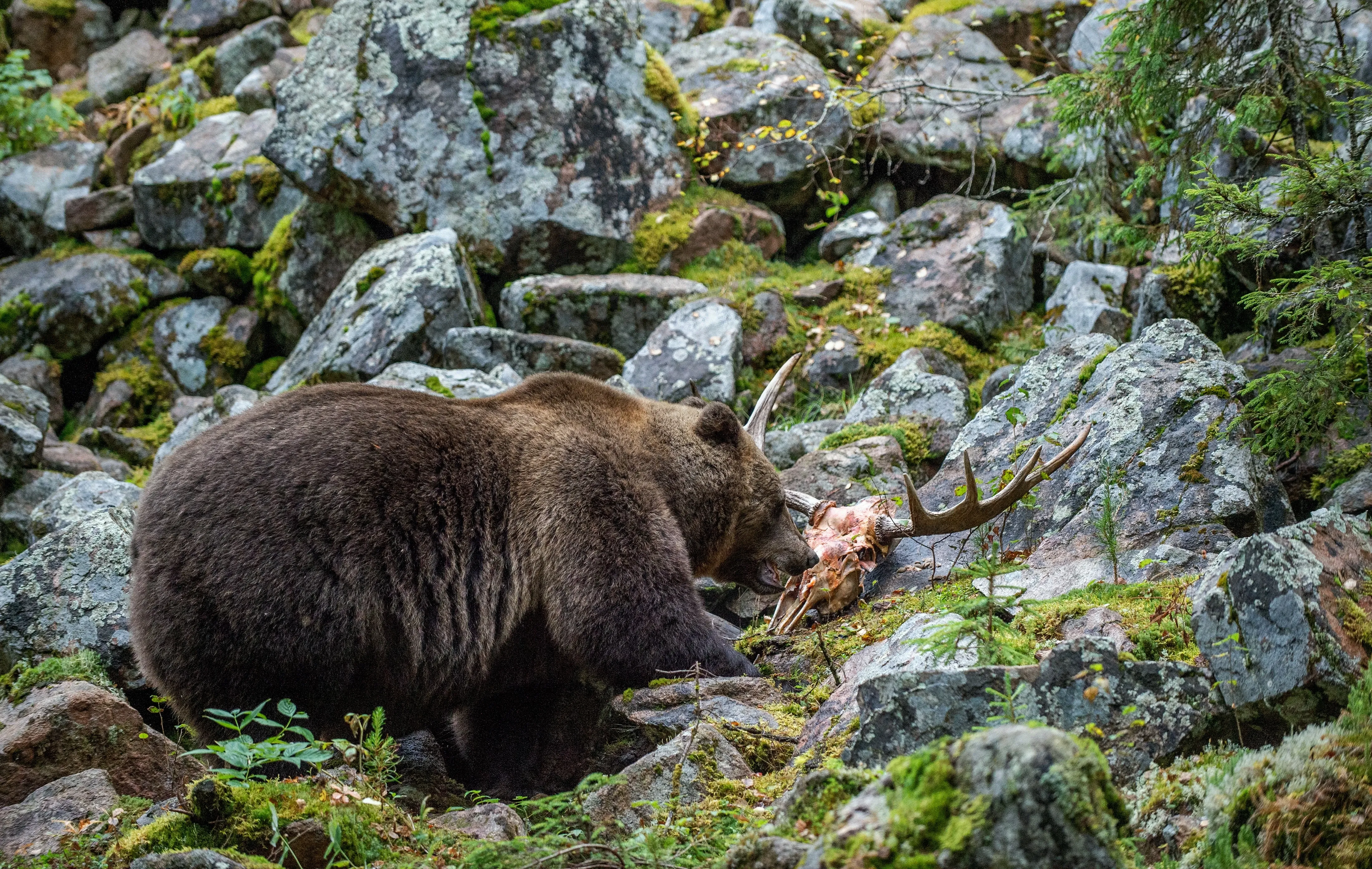
What are threats to Europe's brown bears?
The biggest dangers to these omnivores include habitat fragmentation, intensive land use and high human density, leading to an increased potential for conflict between humans and bears.
Although bear hunting is banned in most countries, illegal shooting of bears is still happening. Poachers sell paws, meat and other parts for large sums on the black markets.
Interesting questions
1) How old do brown bears get?
Brown bears live up to 25 years on average in the wild. However, some never reach this age. Others can live up to 30 years. In captivity, they can grow even older.
2) Are they diurnal or nocturnal?
Brown bears are active both during the day and at night. However, they are so shy that in areas where they are often disturbed, they roam almost exclusively at night and mostly solitary. The only exeption is a mother bear with cubs.
3) Are brown bears clever?
Brown bears have an excellent memory. They prove this by remembering where they find food. Like primates, they can count, understand complex relationships and make tactical decisions.
Brown bears and their winter behaviour
Brown bears do not hibernate but they follow a similar but not the same practice. Bears fall into a deep rest called torpor. During this practice, heart and respiratory rates drop, body temperature drops slightly, and bears do not eat or excrete bodily waste. Bears can stay in this state for more than 100 days.
The main difference between hibernation and torpor is that during torpor, the animal can quickly wake up if it is injured or threatened by predators. Pregnant female bears can also wake up from torpor to give birth and then go back to sleep! An animal in hibernation would have an even lower body temperature.
Bears would not find food in the icy, snowy winter months. Therefore, they build up reserves beforehand. During this time, they gain up to 1 kg a day.
The European brown bear spends its winter in a cave. During this phase, they feed on the accumulated fat and lose 20-40% of their body weight again.
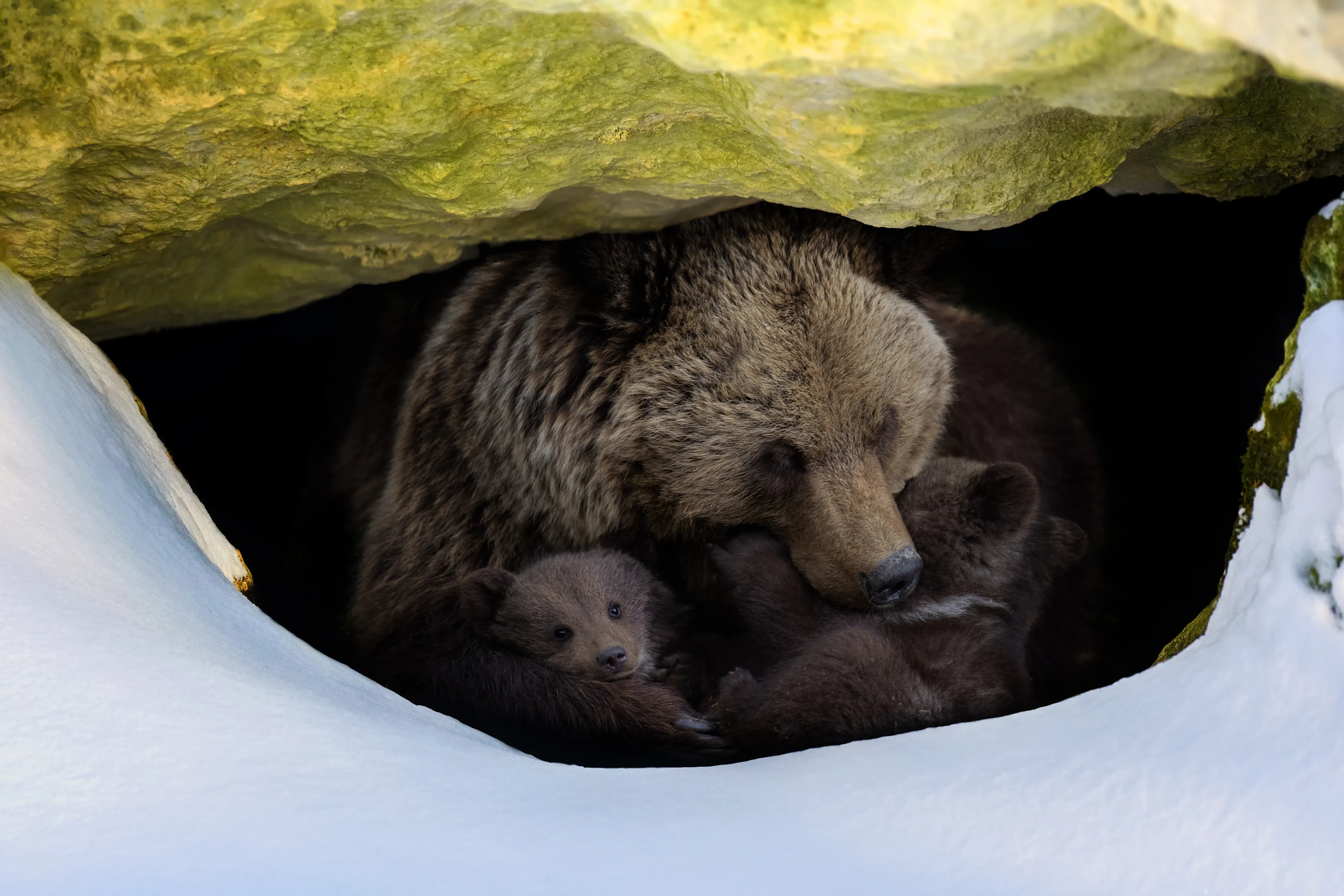
How does the European brown bear reproduce?
Bears reach sexual maturity at the age of three to five years. Bears are polygamous and can mate several times with different partners. The mating season is between May and June. Males and females go their separate ways again after mating.
Between January and March, two to three cubs are born in the winter cave. Newborn bears weigh a maximum of 500 grams and are naked and blind.
The first bears leave the den in spring when they have grown, and it is warmer outside. The cubs stay with their mother for up to two years, even after several months of nursing.
The future of the brown bear in Europe
The brown bear, a symbol of Europe's wild forests, is experiencing an encouraging renaissance. Thanks to conservation efforts and reintroduction in some regions, the population is recovering. But challenges remain: Habitat loss and climate change continue to threaten the bears. The future depends on our determination to work together to protect bears and their habitats. The brown bear reminds us that wilderness survives in Europe and is a symbol of harmony between man and nature. Let it inspire us to preserve our wilderness.
Source references:
WWF
Federation for Nature Conservation
Scienceworld
Sign up for the newsletter
By clicking on “Subscribe now” I will subscribe to the Conscious Explorer newsletter with all the information about mindful travel. Information on the success measurement included in the consent, the use of the shipping service provider MailChimp, logging of the registration and your rights of revocation can be found in our privacy policy.

